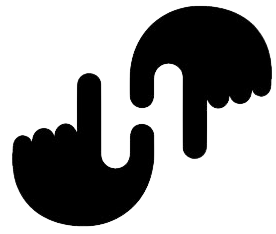How do you treat an Achilles tendon spur?
Heel spurs are treated by measures that decrease the associated inflammation and avoid reinjury. Local ice applications both reduce pain and inflammation. Anti-inflammatory medications, such as naproxen (Aleve) and ibuprofen (Advil), or injections of cortisone, are often helpful.
Can a bone spur cause Achilles tendonitis?
Another spot that’s susceptible to the growth of bone spurs is at the top and back of the heel, where the heel bone connects with the Achilles tendon. A bone spur in this location can irritate the Achilles tendon, causing pain and inflammation—this is known as insertional Achilles tendonitis.
Does insertional Achilles tendonitis go away?
Insertional Achilles Tendonitis or other Achilles injuries can take 6 to 12 months to properly heal depending on the severity of injury. Seriously torn or ruptured tendons that require surgery might sometimes require up to a year or more for a full recovery and a return to sports activities.
How do you get rid of insertional Achilles tendonitis?
Treatments. Non-surgical treatments, including liberal use of nonsteroidal anti-inflammatory drugs, heel lifts, stretching, and switching to shoes that do not put pressure over this area, are effective for the majority of patients.
Is walking OK with Achilles tendonitis?
Stay physically active, though. It is a good idea to switch from high-impact activities like running to something like swimming, cycling, or walking short distances. This will assist in the treatment of your Achilles tendon and reduce pain in the heel and calf muscles.
What are 2 signs of Achilles tendonitis?
Symptoms
- Pain and stiffness along the Achilles tendon in the morning.
- Pain along the tendon or back of the heel that worsens with activity.
- Severe pain the day after exercising.
- Thickening of the tendon.
- Bone spur (insertional tendinitis)
- Swelling that is present all the time and gets worse throughout the day with activity.
Why is insertional Achilles tendonitis so painful?
Insertional tendonitis involves inflammation at the point where the Achilles tendon inserts into the heel bone. People with this condition often have tenderness directly over the insertion of the Achilles tendon, which is commonly associated with calcium formation or a bone spur forming just above the insertion point.
Is walking bad for Achilles tendonitis?
What can be done for spur on my achilles tendon?
Treatment For An Achilles Tendon Bone Spur Local application of ice pack can help alleviate the symptoms associated with inflammation and provide some relief for pain. Alteration of shoes so as to reduce strain on the ankle joint is important. Consult a physical therapist.
How do you treat Achilles spur?
The care for an Achilles bone spur is similar to the treatment used for tendinosis. Conservative care for an Achilles bone spur involves the use of special orthotics and physical therapy. This is intended to ease the tendon tension and alleviate the pain in the heel.
What is best treatment for Achilles tendonitis?
If you suspect you have Achilles tendonitis, consult with your podiatrist. Common treatments include physical therapy, orthotic insoles, and supportive shoes, although, if several months of more-conservative treatments don’t work or if the tendon has torn, your doctor may suggest surgery to repair your Achilles tendon.
What is recovery time for Achilles’ heel spur removal?
After the symptoms become chronic, it may be necessary to remove the bone spur and then reattach the Achilles tendon. Because this area has poor blood supply, recovery from this operation can take up to three months.
